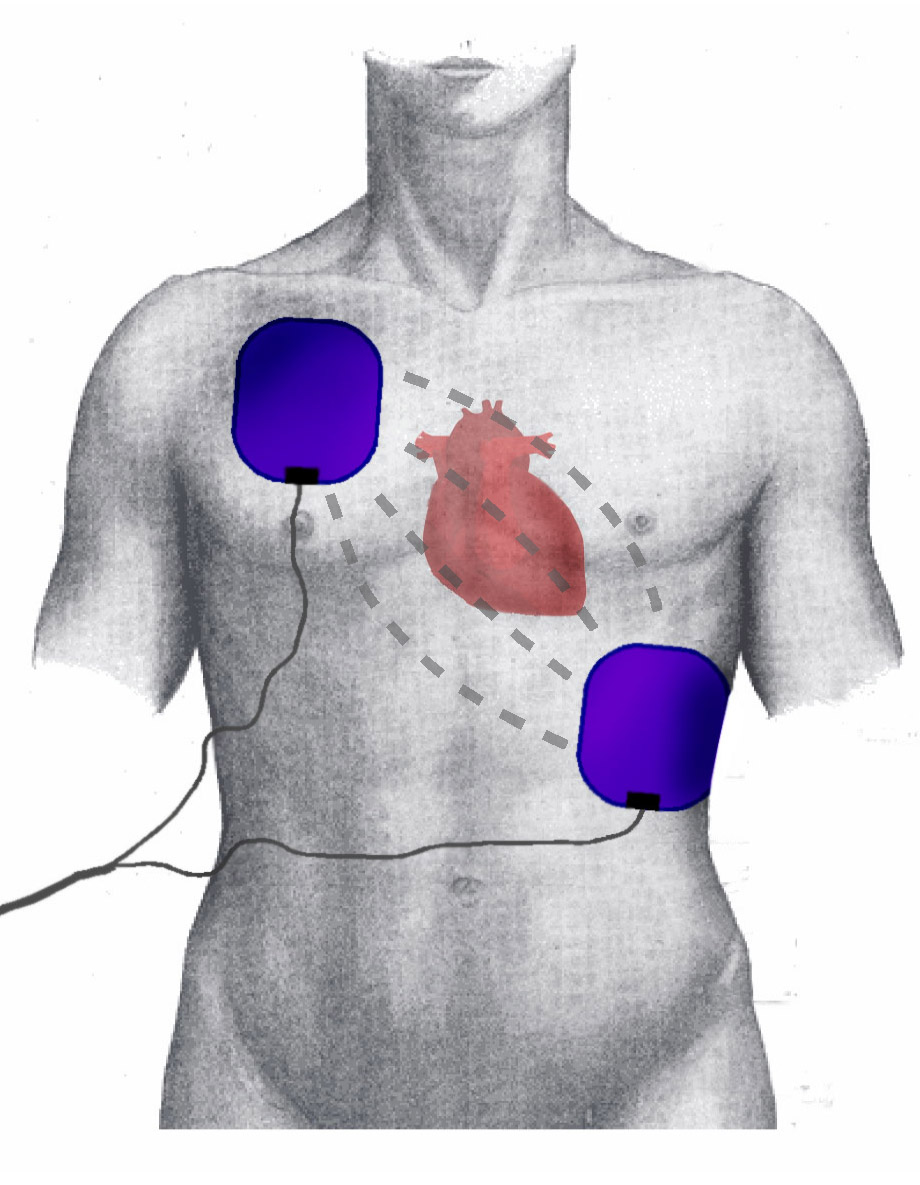Defibrillation - cardiac arrest, therapeutic method

What is Defibrillation and Definition
Defibrillationis a therapeutic method for delivering an electrical shock to the HEART to restore it to a functional rhythm. Defibrillation is an emergency treatment necessary to prevent death resulting from VENTRICULAR FIBRILLATION (rapid, discordant, and ineffective contractions that fail to pump BLOOD out of the heart). The body cannot survive in ventricular fibrillation for longer than a few minutes, making rapid response essential. The most common causes of ventricular fibrillation are MYOCARDIAL INFARCTION, arrhythmic cardiac disease such as LONG QT SYNDROME (LQTS), ELECTROCUTION, and drowning.
In hospital-based defibrillation, a health-care professional (usually a doctor) places paddles or electrodes on the outside of the chest. The defibrillator machine delivers the determined electrical impulse, generally producing a pronounced jolt in the person’s body. The desired effect is for all electrical activity in the heart to momentarily cease, then for the heart to resume normal electrical activity to the extent possible in the context of damage that may have occurred to the heart. The doctor may choose to administer multiple charges, depending on the response and the likelihood for successful restoration of a regular HEART RATE.
In the 1990s a basic portable device, the AUTOMATED EXTERNAL DEFIBRILLATOR (AED) became available. AEDs allow virtually anyone to administer a potentially lifesaving electrical shock to someone who is experiencing ventricular fibrillation. The computerized programming of an AED reads the ELECTROCARDIOGRAM (ECG) of the person to confirm the ventricular fibrillation, then delivers a preset electrical shock. AEDs have saved countless lives.
The risks of defibrillation include electrical BURNS to the person being resuscitated and electrical shock or burns to the person administering defibrillation. Burns may occur at the contact points of the paddles or electrodes and also elsewhere on the body where there are items of metal such as jewelry or, in a hospital setting, monitoring electrodes. As well, anyone in contact with the person or with the bed the person is lying on is at risk for contact electrical shock. The success of defibrillation depends on the cause of the ventricular fibrillation, how long the heart has been in ventricular fibrillation, and the person’s overall cardiovascular and general health status.
See also ARRHYTHMIA; CARDIOPULMONARY RESUSCITATION (CPR); CARDIOVERSION.
Open discussion on the topic Defibrillation - cardiac arrest, therapeutic method
Similar interests
- Casino Non Aams
- Nuovi Casino
- Casinos Not On Gamstop
- UK Casinos Not On Gamstop
- Casinos Not On Gamstop
- UK Casinos Not On Gamstop
- Casino Non Aams Italia
- Slot Sites Not On Gamstop
- Meilleur Casino En Ligne
- Non Gamstop Casino Sites UK
- Meilleur Casino En Ligne
- Casino En Ligne France
- Best Non Gamstop Casinos
- Casinos Not On Gamstop
- UK Casino Not On Gamstop
- Casinos Not Signed Up To Gamstop
- Best Slot Sites UK
- Non Gamstop Casino Sites UK
- Online Casinos Nederland
- Online Casinos Nederland
- Casinos Not On Gamstop
- Best New Uk Casinos Not On Gamstop
- Casino Non Aams
- Non Gamstop Casinos UK
- Migliori Siti Casino Non Aams
- Bitcoin Casinos
- Sites De Paris Sportifs Belgique
- Bookmaker Non Aams
- Casino En Ligne
- Casino Nouveau En Ligne